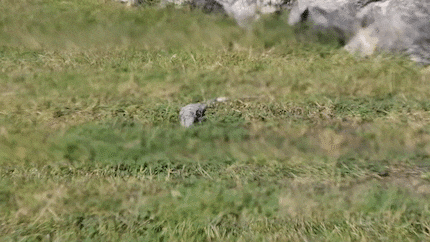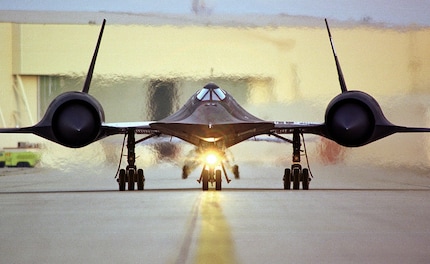Heat distortion: How to prevent curled Mexican iguanas
Stephanie filmed an iguana in the sun. The footage is unusable. The reason: a mirage consisting of nature, technology and physics.
"You, I've broken my Note 9," says video producer Stephanie Tresch before a shoot.
I pray that this isn't the case, because it feels like the fourth mobile phone she has broken this year. I ask her: Why is the mobile broken?
"My iguana video has waves like this," she says.
She shows me a video she recorded in Mexico. In the three-second video, she wants to show an iguana doing iguana things in a meadow and not actually caring about the Swiss woman with the Note 9.

I realise three things:
- The video is shot with the Note 9's telephoto lens
- Stephanie is standing in the shade, the cold-blooded iguana is hanging out in the sun
- It was a really hot day, because the cicadas are drumming in the background
"Good news: your mobile isn't broken," I say, relieved.
A song of ice and fire
"Yes, but the picture still looks like shit," she says.
I remember a shoot in Berlin. We wanted to film cyclists and pedestrians on the pavement on a nice day. As B-roll footage for other projects. Because if we're travelling the world with Sony cameras, then we'll use them. During the shoot, however, we had to bring our dinner forward because the floor in front of the Risa at Bahnhof Zoo shimmered when we held the camera on it.
The effect in the iguana video is the same. It doesn't just affect cameras in smartphones, but every lens, especially lenses that can zoom. The flickering effect is also visible to the naked eye, but a human eye and brain can compensate for the effect for longer than the mechanical eye of a camera without a particularly clever brain behind it.
Because when the sun burns on the ground, it heats up. This heats the air above the ground. The hot air rises and the cold air above it sinks. This leads to turbulence in the air, which is invisible to humans. As cold air refracts light differently than warm air, the flickering appears. A mirage, by the way, works in a very similar way.
But now with Smart
If you employ a zoom, you shorten the image composition. In other words, your camera ignores the foreground and middle ground and focuses entirely on the background. The camera cannot cope with rapidly changing air conditions. It's no different with the Samsung Note 9's dual optical zoom. The only difference is that all the smartphone functions are still trying to work. An autofocus system easily copes with this in stable air conditions. But with large temperature differences, the system reaches its limits, depending on its intelligence.
Stephanie speculates: However, an SLR or system camera would not have captured the flickering in this form, but either everything would have been flickered or nothing at all.

The reason why Stephanie's iguana comes with almost VHS-charming stripes is that the autofocus system in the phone camera is trying to cope with the temperature differences and compensate for the turbulence. If the camera has the top 20 per cent of the image under control, then it sees the swirls further down. Then they are equalised, which again leads to blurring further down. Countering out, down, countering out, down... the camera no longer checks anything and stretches its arms. The iguana becomes blurred.
The whole thing doesn't just work if you're in the shade and the iguana is in the sun. It also works the other way round. If you use the bonnet of your car as an improvised tripod in winter or take photos or film from inside a heated car, the same effect will occur.
In winter, however, please do not use an iguana, as cold-blooded animals and cold weather make for quite static shots, as an iguana loses the ability to move at around 4 degrees Celsius. At around 10 degrees Celsius, the animals slow down, after which they simply stand still. However, they do not die immediately when they are frozen stiff. This only happens after a longer stay in the cold. Nevertheless, it's better to choose the dog as your subject in winter.
There are roughly three tricks you can use to solve the problem:
- Get closer to the subject
- Postpone the shoot until the air has cooled down
- You can try changing the angle of your subject
So, that's it. Stephanie and I have talked it over and I hope to finally get to the productive part of the shoot.
"Are we going to do a sound check now," I ask Stephanie.
"We don't have to. The camera was recording the whole time."
Ah yes, thanks, I wish I'd known beforehand.
Journalist. Author. Hacker. A storyteller searching for boundaries, secrets and taboos – putting the world to paper. Not because I can but because I can’t not.
Practical solutions for everyday problems with technology, household hacks and much more.
Show all